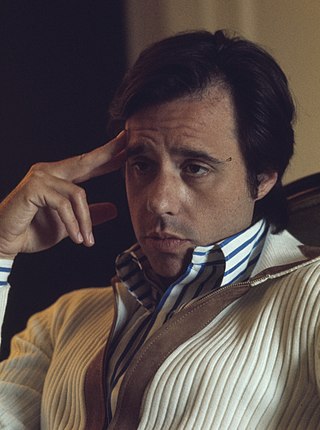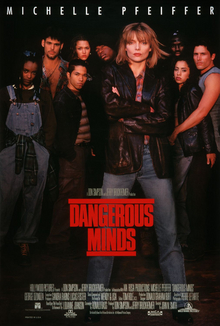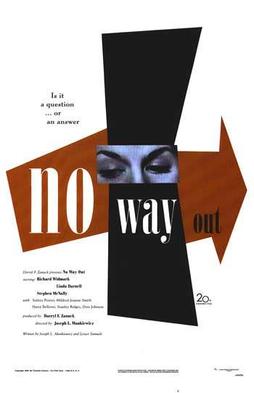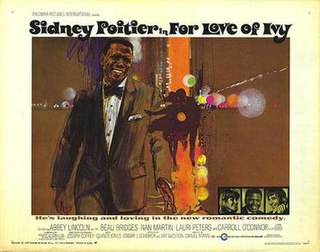
Peter Bogdanovich was an American director, writer, actor, producer, critic, and film historian. He started his career as a film critic for Film Culture and Esquire before becoming a prominent filmmaker as part of the New Hollywood movement. He received accolades including a BAFTA Award and Grammy Award, as well as nominations for two Academy Awards and two Golden Globe Awards.

Sidney Poitier was a Bahamian and American actor, film director, and diplomat. In 1964, he was the first Black actor and first Bahamian to win the Academy Award for Best Actor. He received two competitive Golden Globe Awards, a BAFTA Award, and a Grammy Award as well as nominations for two Emmy Awards and a Tony Award. In 1999, he was ranked among the "American Film Institute's 100 Stars". Poitier was one of the last surviving stars from the Golden Age of Hollywood cinema.

A Patch of Blue is a 1965 American drama film directed by Guy Green about the friendship between an educated black man and an illiterate, blind, white 18-year-old girl, and the problems that plague their friendship in a racially divided America. Made in 1965 against the backdrop of the growing civil rights movement, the film explores racism while playing on the idea that "love is blind."

To Sir, with Love is a 1967 British drama film that deals with social and racial issues in an inner city school. It stars Sidney Poitier and features Christian Roberts, Judy Geeson, Suzy Kendall, Patricia Routledge and singer Lulu making her film debut. James Clavell directed from his own screenplay, which was based on E. R. Braithwaite's 1959 autobiographical novel of the same name.

Ghost Dad is a 1990 American fantasy comedy film directed by Sidney Poitier and starring Bill Cosby, in which a widower's spirit is able to communicate with his children after his death. It was a critical and box office bomb.

Goodbye, Mr. Chips is a 1939 romantic drama film starring Robert Donat, Greer Garson and directed by Sam Wood. Based on the 1934 novella of the same name by James Hilton, the film is about Mr. Chipping, a beloved aged school teacher and former headmaster of a boarding school, who recalls his career and his personal life over the decades. Produced for the British division of MGM at Denham Studios, the film was dedicated to Irving Thalberg, who died on 14 September 1936. At the 12th Academy Awards, it was nominated for seven awards, including Best Picture, and for his performance as Mr. Chipping, Donat won the award for Best Actor.

Exiled: A Law & Order Movie is a 1998 (two-hour-format) television film based on the police procedural and legal drama television series Law & Order . Written by Charles Kipps, and directed by Jean de Segonzac, the film originally aired on NBC on November 8, 1998. The film revolves around Noth's character, Detective Mike Logan. Kipps received a 1999 Edgar Award for his screenplay.

The Great St. Trinian's Train Robbery is a British comedy film, directed by Frank Launder and Sidney Gilliat, written by Sidney and Leslie Gilliat, and released on 4 April 1966. It is the last of the original series of films based on the St Trinian's School set of images and comics, and the only one to be produced in colour. The film stars a selection of actors from previous films in the series, including George Cole, Richard Wattis, Eric Barker, Michael Ripper, and Raymond Huntley, alongside Frankie Howerd, Reg Varney, Dora Bryan, and the voice of Stratford Johns.

Dangerous Minds is a 1995 American drama film directed by John N. Smith and produced by Don Simpson and Jerry Bruckheimer. It is based on the autobiography My Posse Don't Do Homework by retired U.S. Marine LouAnne Johnson, who in 1989 took up a teaching position at Carlmont High School in Belmont, California, where most of her students were African-American and Latino teenagers from East Palo Alto, a racially segregated and economically deprived city. Michelle Pfeiffer stars as Johnson. Critical reviews were mixed, with some critics praising Pfeiffer's performance but criticizing the screenplay as contrived and full of stereotypes. The film grossed $179.5 million and spawned a short-lived television series.

No Way Out is a 1950 American crime drama film noir directed by Joseph L. Mankiewicz and starring Sidney Poitier in his film debut, alongside Richard Widmark, Linda Darnell and Stephen McNally. The film centers on an African American doctor who confronts the racism of a poor slum, after he treats a racist white criminal.
Saundra Santiago is an American actress. She is best known for her role as Det. Gina Calabrese in the NBC original crime drama series Miami Vice (1984–1990). She also played Carmen Santos on the CBS soap opera Guiding Light and the second Carlotta Vega on the ABC soap opera One Life to Live.

Shoot to Kill is a 1988 American buddy cop action thriller film directed by Roger Spottiswoode and starring Sidney Poitier, Tom Berenger, Clancy Brown, Andrew Robinson, and Kirstie Alley. The film follows an FBI agent pursuing a homicidal extortionist; when the extortionist kidnaps a fishing guide in the Pacific Northwest, the agent teams up with her partner, a local wilderness guide, to rescue her.

Docks of New York is a 1945 American comedy film directed by Wallace Fox and starring the East Side Kids.

The Thing Called Love is a 1993 American comedy-drama film directed by Peter Bogdanovich and starring Samantha Mathis as Miranda Presley, a young musician who tries to make it big in Nashville. River Phoenix, Dermot Mulroney and Sandra Bullock also star. While the film involves a love triangle and various complications in Miranda's route to success, it provides a sweetened glimpse at the lives of aspiring songwriters in Nashville. Its tagline is: "Stand by your dream".

For Love of Ivy is a 1968 American romantic comedy film directed by Daniel Mann. The film stars Sidney Poitier, Abbey Lincoln, Beau Bridges, Nan Martin, Lauri Peters, and Carroll O'Connor. The story was written by Poitier with screenwriter Robert Alan Aurthur. The musical score was composed by Quincy Jones. The theme song "For Love of Ivy", written by Quincy Jones and Bob Russell, was nominated for an Academy Award for Best Original Song. The film received Golden Globe supporting-acting nominations for Beau Bridges and Abbey Lincoln.

Goodbye Gemini is a 1970 British psychological horror film directed by Alan Gibson and starring Judy Geeson, Michael Redgrave, and Martin Potter. Based on the novel Ask Agamemnon by Jenni Hall, it concerns a pair of unusually close fraternal twins, Jacki and Julian, discovering Swinging London while home on Spring Break. Their experiences complicate the pair's relationship, which is already strained due to Julian's incestuous fascination with his sister, which he sees as a natural manifestation of what he believes to be the pair's hive-minded nature.

To Sir, With Love is a 1959 autobiographical novel by E. R. Braithwaite set in the East End of London. The novel is based on the true story of Braithwaite accepting a teaching post in a secondary school. The novel, in 22 chapters, gives insight into the politics of race and class in postwar London.
Dana Eskelson is an American television, film, and theatre actress.

The Slender Thread is a 1965 American drama film starring Anne Bancroft and Sidney Poitier. It was the first feature-length film directed by future Oscar-winning director, producer and actor Sydney Pollack.

The Organization is a 1971 DeLuxe Color American crime thriller film starring Sidney Poitier and directed by Don Medford. It was the last of the trilogy featuring the police detective Virgil Tibbs that had begun with In the Heat of the Night (1967), followed by They Call Me Mister Tibbs! (1970). In The Organization, Tibbs is called in to hunt down a gang of urban revolutionaries, suspected of a series of crimes. The screenplay was penned by James R. Webb, and the film co-stars Barbara McNair, Gerald S. O'Laughlin, Sheree North and Raul Julia.


















